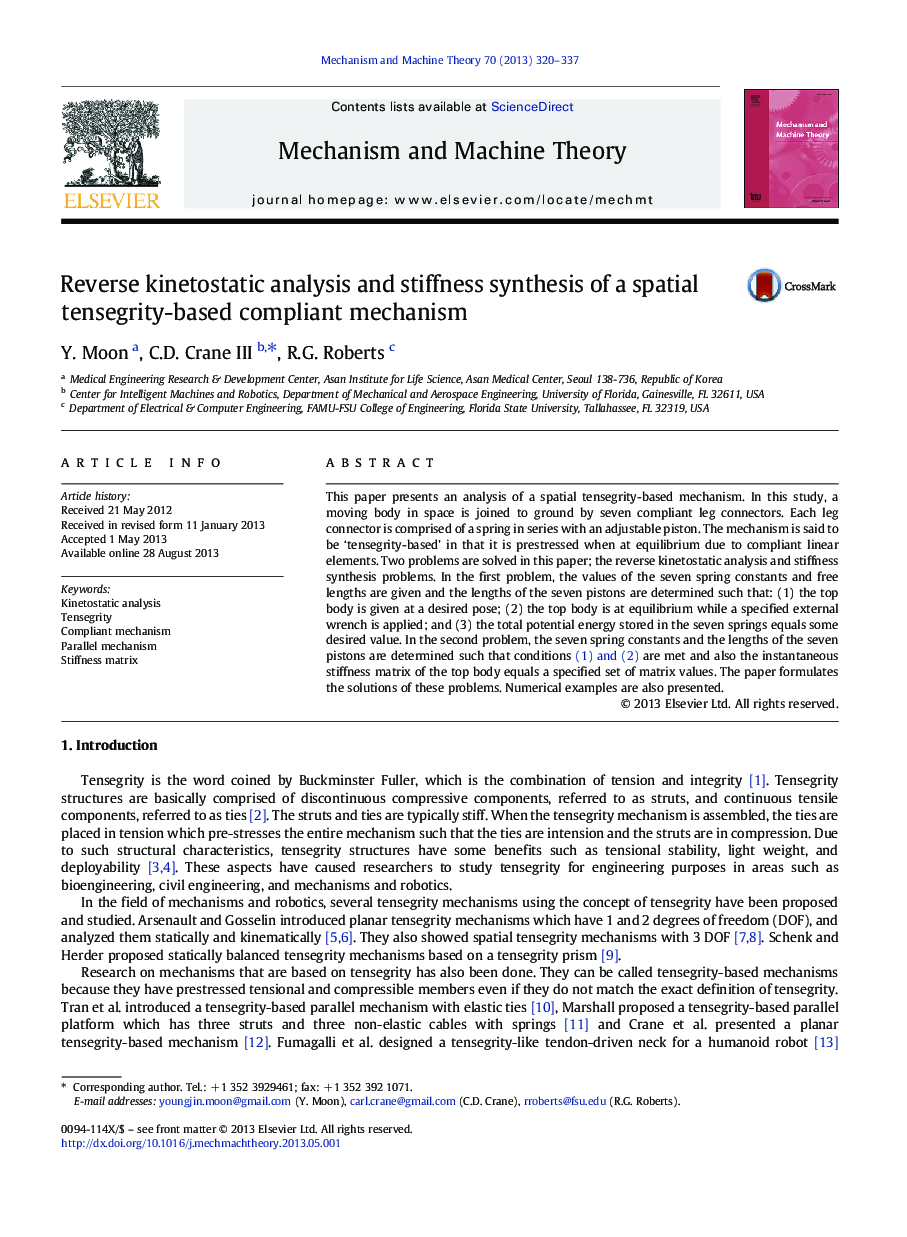| Article ID | Journal | Published Year | Pages | File Type |
|---|---|---|---|---|
| 802304 | Mechanism and Machine Theory | 2013 | 18 Pages |
•A spatial parallel mechanism is analyzed which has seven compliant leg connectors.•An analysis is conducted whereby each piston length is determined for a desired pose.•Another analysis determines the stiffness in each leg for a desired global stiffness.
This paper presents an analysis of a spatial tensegrity-based mechanism. In this study, a moving body in space is joined to ground by seven compliant leg connectors. Each leg connector is comprised of a spring in series with an adjustable piston. The mechanism is said to be ‘tensegrity-based’ in that it is prestressed when at equilibrium due to compliant linear elements. Two problems are solved in this paper; the reverse kinetostatic analysis and stiffness synthesis problems. In the first problem, the values of the seven spring constants and free lengths are given and the lengths of the seven pistons are determined such that: (1) the top body is given at a desired pose; (2) the top body is at equilibrium while a specified external wrench is applied; and (3) the total potential energy stored in the seven springs equals some desired value. In the second problem, the seven spring constants and the lengths of the seven pistons are determined such that conditions (1) and (2) are met and also the instantaneous stiffness matrix of the top body equals a specified set of matrix values. The paper formulates the solutions of these problems. Numerical examples are also presented.
